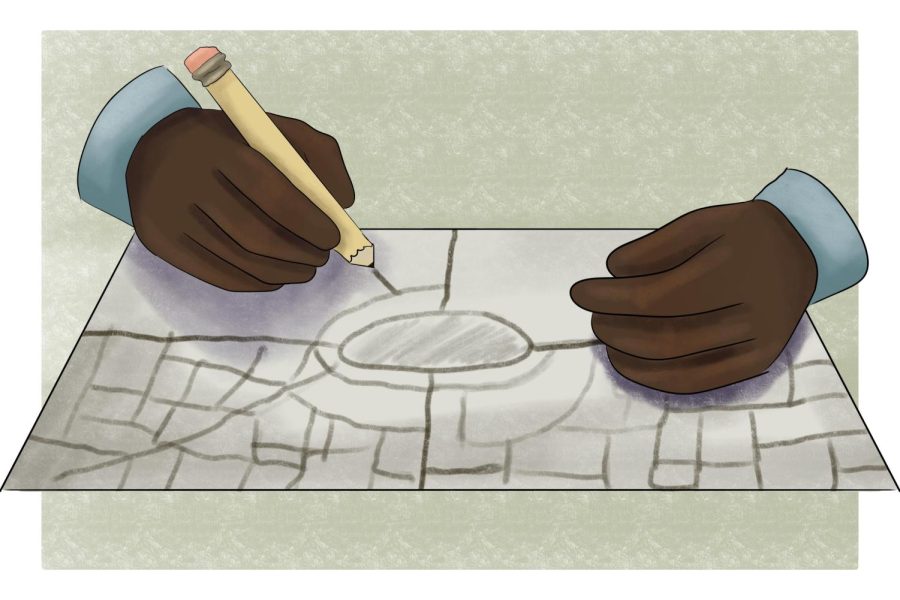Opinion | Urban planning needs to prioritize people, not economics
April 13, 2023
Last May, I traveled to Amsterdam, Netherlands, for a study abroad course about sustainable cities. There, I learned that Amsterdam is a pinnacle of sustainable urban planning, incorporating elements like controlled urban sprawl, green spaces and walkability to create a compact city that promotes people-centered development and well-being.
I learned that these traits extend to many other European cities too — such as Copenhagen, Denmark, and Zurich, Switzerland — that impose climate-positive policies that focus on human needs and not the wants of industry.
Through this experience, I also learned that American cities differ drastically from the sustainability-centric cities in Europe in their approaches to urban planning. American cities are concrete jungles, whereas Dutch cities prioritize aesthetic greenery that improve one’s quality of life.
The vast differences between American and Dutch cities can be boiled down to one central element — their priorities. American cities prioritize economics, whereas Dutch cities prioritize people. In order to address issues of well-being and social inequity, America needs to follow in Amsterdam’s and other European cities’ footsteps by prioritizing people over industry.
One central aspect of people-centered development is the idea of “placemaking.” This is a relatively new term in urban planning, but an age-old idea in which cities contain public spaces where people can connect to each other and the surrounding city. When designing city streets, for example, the Dutch employ a concept dubbed “woonerf,” which translates to “living street.” This approach to street planning uses strategies such as traffic calming devices, physical barriers and low speed limits to force drivers to safely share street space with pedestrians and cyclists.
In the process, woonerf turns streets into places. Streets are lined with thick sidewalks, and room is often made for restaurants, stores and other businesses to engage with passersby. And when people choose to walk, bike or take public transit instead of driving, they drastically reduce their greenhouse gas emissions while simultaneously improving their physical health. And while American cities such as New York City and Chicago are beginning to use the idea of placemaking to install engaging public spaces, they still struggle with walkability and equal access to public space. Our infrastructure is designed for automobiles, prioritizing efficiency over engagement.
By designing city structures through a human lens, urban planners can create buildings and streets that aren’t just distinct and aesthetic but also accessible and comfortable for human use. Placemaking encourages citizens to spend time in public space and loiter, thus supporting local businesses, physical wellness and community engagement. After all, a city without public space is like a home without a living room — there is no sense of belonging.
Walkability is another critical element of city planning, both in terms of street structure and physical distance. Studies find that American cities are far less walkable than their international counterparts, for streets have high speed limits, few bike lanes — with even fewer street barriers — and unevenly dispersed transit stops. American cities also employ strict zoning laws that severely limit mixed-land use as well, creating distance between residential housing and necessities like schools, grocery stores and other shops and businesses. In this manner, cities expand outwards rather than densify inwards, requiring the use of private automobiles.
Improving walkability often entails making a city increasingly compact in size. A “compact city” refers to an urban model with high-density and mixed-use developments, placing homes, stores and services within walking distance with each other. Walkability cultivates emotional and mental wellness, as people are encouraged to spend more time wandering the city streets, engage with green spaces and find it easier to travel to the homes of friends and family.
In an ideal city, the layout should be compact in that citizens should be within walking distance of all necessities — the grocery store, pharmacist and public transit. Walkability decreases the presence of food deserts — areas in which people have limited access to a variety of healthy and affordable food, often as a result of physical distance. Food deserts are a major issue in the U.S., with more than 13.5 million people lacking access to healthy foods. This inaccessibility can lead to higher risks of diet-related conditions, such as diabetes, obesity and cardiovascular disease.
By employing people-centered development through strategies like placemaking and walkability, urban planning further promotes equity and social justice. When planners prioritize human over economic needs, they see urban planning through a city-dweller’s lens. Through their planning, they may broaden access to social amenities while ensuring that they are universally inclusive. Such elements include the thorough dispersal of grocery stores to prevent food deserts, accessibility to public transportation and development of green spaces.
Furthermore, urban planning that prioritizes people often prioritizes sustainability as a result. Green spaces, for example, are a vital element of a city. Incorporating nature into urban settings can enhance the quality of life by contributing to placemaking, promoting sustainable lifestyles, supporting community engagement and improving the overall well-being of urban residents. The World Health Organization even recommends that all urban residents live within 300 meters of a green space. Green spaces reduce environmental health risks associated with urban living, such as air and noise pollution, while simultaneously promoting mental and physical well-being.
In addition, walkable cities work to control urban sprawl. Urban sprawl is the rapid expansion of a city into neighboring cities and towns, often with low-density housing, single-use zoning and increased dependency on private automobiles. This process can displace minority groups and cause gentrification, further distancing low-income individuals from necessities like groceries and pharmacies. Urban sprawl also has a tendency to consume viable farmland, depleting food sources as well as natural ecosystems.
While urban planning may sometimes need to forgo expansive economic growth, these two need not be mutually exclusive. Walkability is great for local economies, for residents spend more money at local businesses and travel to stores more frequently. Infrastructure is also less costly to build and maintain as people do not need to travel as far or drive automobiles.
I’m not saying we should demolish and rebuild most major U.S. cities. Rather, we should approach current urban planning activities with social needs in mind. Pitt, for one, needs to stop taking away our limited green spaces for the sake of unnecessary housing or industrial growth.
Placemaking, walkability, equity and sustainability should be the pillars upon which we expand and structure our cities. By prioritizing these elements of urban planning, we can improve the well-being of city residents across the country.
Sarah Liez writes primarily about gender issues and social phenomena. Write to her at [email protected].








